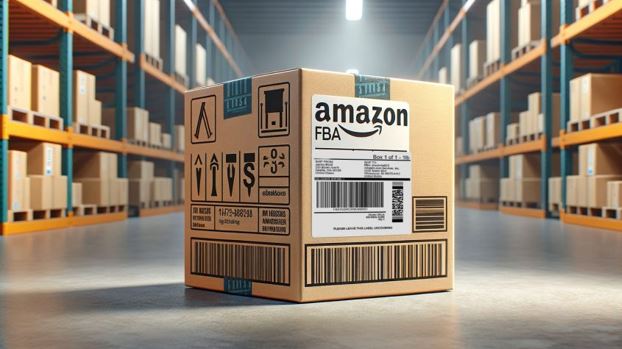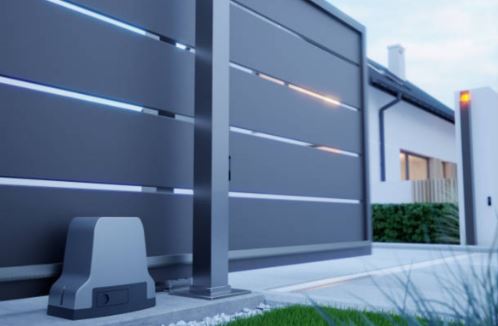The Role of Technology in Modern Commercial Cleaning
The cleaning industry has seen a remarkable transformation in recent years, thanks to technological advancements. From automated vacuum cleaners to data-driven cleaning schedules, technology has reshaped commercial cleaning, enhancing efficiency and effectiveness in office and commercial spaces. Here’s how modern technology is redefining the commercial and office cleaning industry.
1. Introduction to Technological Advancements in Cleaning
The role of technology in commercial cleaning has shifted from a luxury to a necessity. Today, businesses are turning to innovative solutions to streamline cleaning processes, reduce labor costs, and maintain hygiene standards. In high-traffic environments like offices, malls, and airports, traditional cleaning methods are increasingly being replaced by advanced, tech-driven alternatives that offer precision and speed.
2. Robotics in Commercial Cleaning
Robotic cleaning machines have become a popular addition in commercial and office cleaning. These robots, equipped with sensors and programming capabilities, perform tasks like vacuuming, mopping, and dusting with minimal human intervention. Notable examples include autonomous floor scrubbers and robotic vacuums that map spaces, detect obstacles, and perform cleaning routines at scheduled times.
In office spaces, these machines help maintain cleanliness throughout the day, especially in areas with frequent foot traffic. The benefits of using robotic cleaning devices include:
- Efficiency: Robots can clean continuously, reducing the workload on staff.
- Cost Savings: Automation reduces labor costs and the time required to complete tasks.
- Consistency: Robots follow programmed paths, ensuring a uniform level of cleanliness across spaces.
3. Smart Sensors and Data-Driven Cleaning
Technology has also introduced smart sensors that track activity in commercial spaces, providing data on usage patterns. For example, sensors installed in restrooms or break rooms monitor foot traffic and alert cleaning staff when the space requires attention. This data-driven approach is known as “demand-based cleaning,” where spaces are cleaned as needed rather than following a strict schedule.
The advantages of data-driven cleaning include:
- Optimized Cleaning Routines: Staff can focus on high-traffic areas that require immediate attention.
- Improved Resource Allocation: Cleaning resources are deployed more effectively, minimizing waste.
- Enhanced Customer Experience: Timely cleaning maintains a positive impression, especially in client-facing areas.
4. Electrostatic Sprayers and Disinfection Technology
In response to growing concerns about germs and viruses, particularly post-pandemic, electrostatic sprayers have become popular in commercial cleaning. These devices spray a fine mist of charged disinfectant particles, which cling to surfaces more effectively than traditional methods. This technology ensures comprehensive coverage, especially on high-touch areas like doorknobs, desks, and elevator buttons.
Electrostatic sprayers not only reduce the risk of infections but also provide:
- Comprehensive Disinfection: Effective against bacteria and viruses, ensuring healthier work environments.
- Speed and Efficiency: Sprayers cover large areas in a short time, ideal for offices and public spaces.
- Reduced Chemical Use: By enhancing coverage, less disinfectant is required, cutting costs and minimizing chemical exposure.
5. IoT and Cloud-Based Cleaning Solutions
The Internet of Things (IoT) has revolutionized commercial and office cleaning by enabling real-time monitoring and control of various cleaning devices. IoT-enabled equipment can connect to cloud-based systems, providing cleaning managers with data on equipment usage, maintenance needs, and performance metrics. These systems can be accessed remotely, allowing supervisors to monitor cleanliness levels across multiple locations from a central dashboard.
Some benefits of IoT and cloud-based solutions include:
- Centralized Management: Managers can oversee operations across locations without being physically present.
- Predictive Maintenance: IoT devices monitor themselves, alerting teams to issues before they lead to equipment downtime.
- Data Insights: Historical data helps optimize cleaning schedules and improves resource planning.
6. Green Cleaning Technologies
Sustainability is a growing concern in commercial and office cleaning. Technological advances now enable eco-friendly cleaning practices, from water-efficient scrubbers to energy-saving vacuums. Green cleaning solutions also incorporate biodegradable chemicals and reduced water usage, aligning with companies’ environmental goals and reducing carbon footprints.
Benefits of adopting green technology in cleaning include:
- Reduced Environmental Impact: Eco-friendly equipment and supplies help lower emissions and waste.
- Healthier Indoor Air Quality: Using fewer harsh chemicals benefits employee health.
- Enhanced Brand Image: Companies known for sustainable practices often enjoy a stronger reputation.
7. Software for Scheduling and Inventory Management
The administrative side of commercial cleaning has also benefited from technology. Digital software for scheduling and inventory management allows cleaning companies to track employees’ schedules, allocate tasks, and monitor supply levels. These tools minimize human error and ensure that cleaning supplies are always stocked and staff assignments are properly managed.
Key advantages of scheduling and inventory management software include:
- Reduced Errors: Automating schedules and inventory eliminates manual mistakes.
- Improved Time Management: Cleaning teams are better organized and punctual.
- Cost Efficiency: Real-time tracking helps avoid over-ordering and reduces waste.
8. The Future of Technology in Commercial and Office Cleaning
The role of technology in commercial and office cleaning is poised for further advancements. Innovations like AI-driven cleaning algorithms, UV-C disinfecting robots, and even drone technology for cleaning high-rise windows are already being tested in the industry. These tools are expected to elevate the standard of cleanliness, health, and efficiency even further, meeting the growing demand for cleaner, safer environments.
Conclusion
Technology has transformed the commercial and office cleaning landscape, making it more efficient, safe, and environmentally friendly. From robotic vacuums to IoT-enabled devices, modern innovations empower cleaning companies to deliver top-tier services while meeting the demands of today’s high-paced commercial environments. By embracing these technologies, companies not only maintain a cleaner workspace but also contribute to a healthier and more sustainable future.





